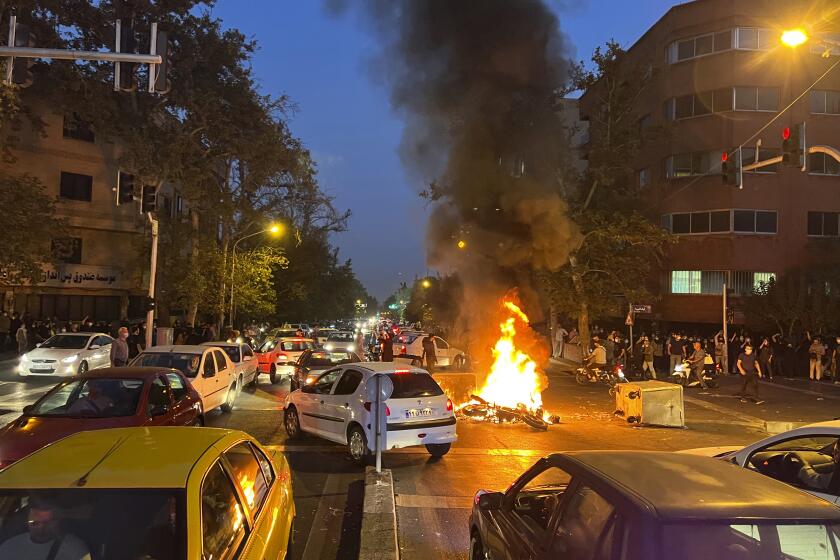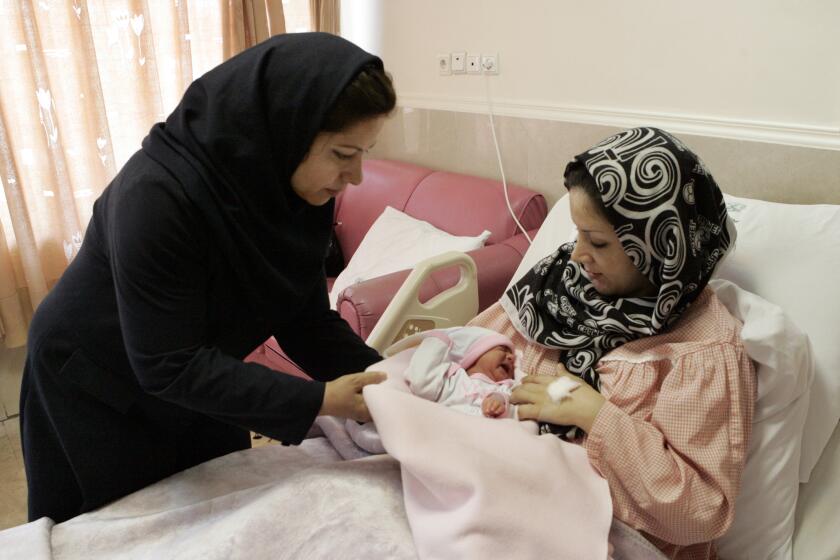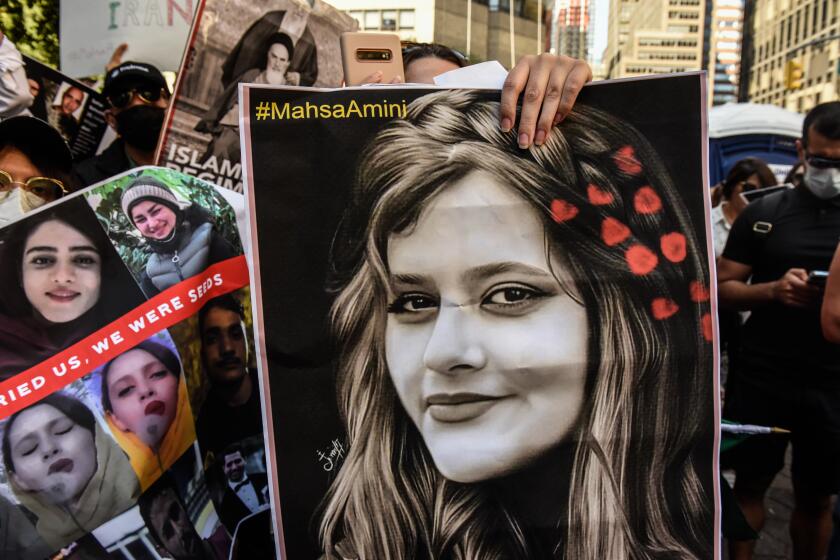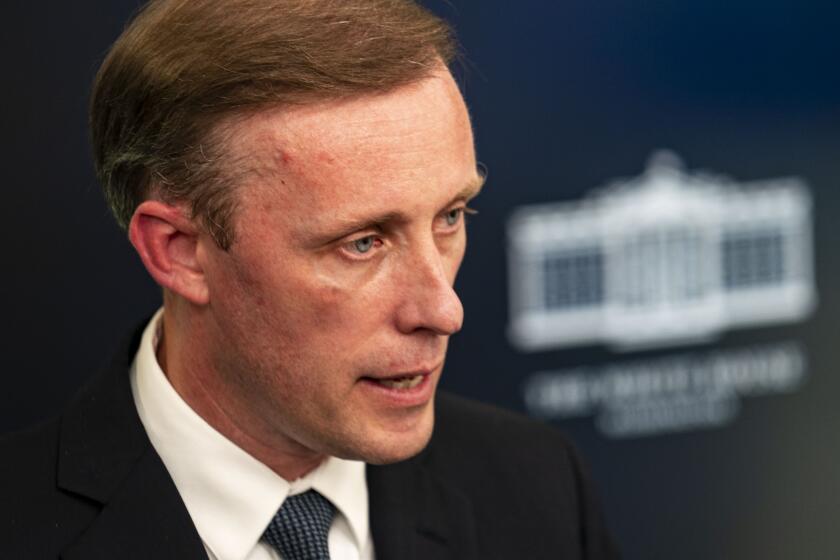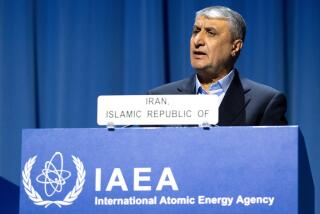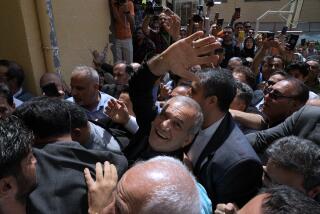âNothing to loseâ: Iranâs protesters step up their defiance as a potential showdown looms
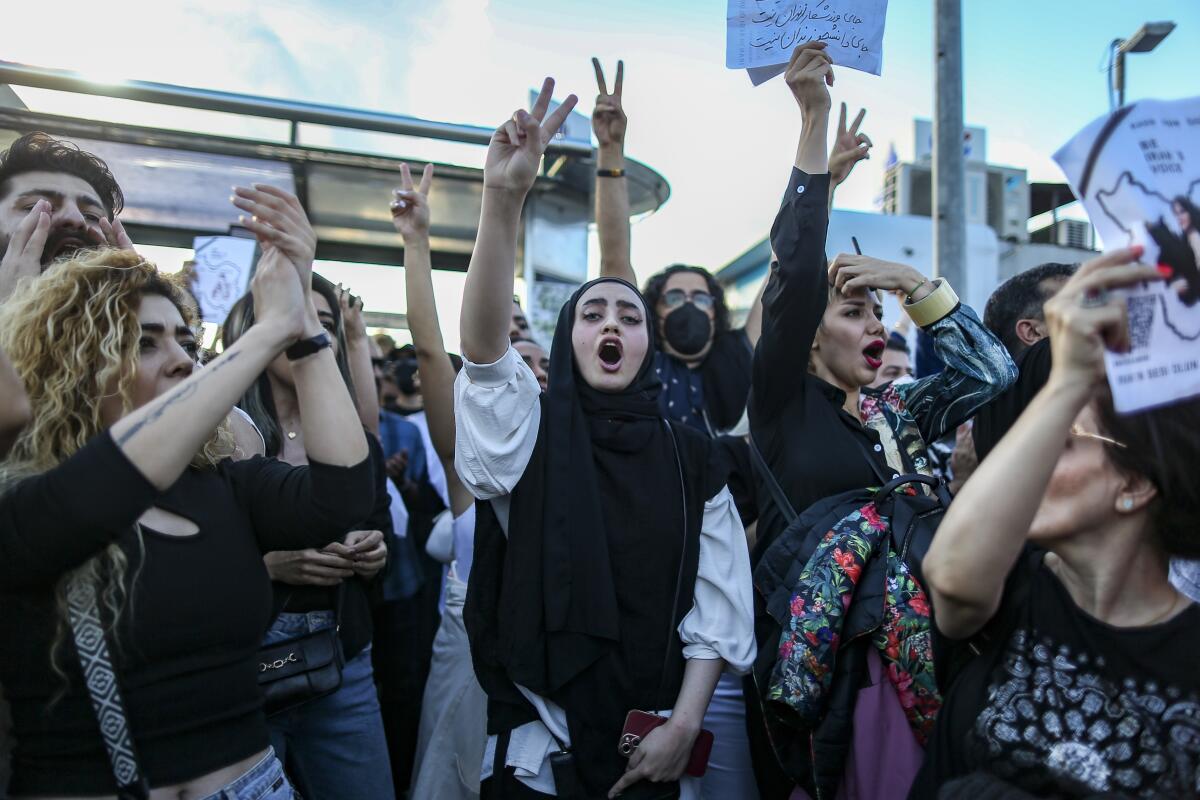
TEHRAN â Twice now, the mass protests roiling Iran have reached even her deeply conservative neighborhood. Shahrzad, a 36-year-old teacher who lives with her parents and acts as their caregiver, has so far heeded her promise to them not to join, although she wants to.
She had participated in demonstrations that erupted in 2009 after a disputed presidential election many believe was fraudulent. Those lasted a year and came to nothing â as did the huge economic protests of early 2018 and late 2019.
But this time things feel different.
âYou just canât compare the anger to how it was in 2009. Back then it was mostly the middle class protesting. Now you barely find anyone who supports the government line or agrees with how things are,â said Shahrzad, who asked that her full name not be used for fear of reprisal.
Even in the conservative part of Tehran where she lives, teenage schoolgirls were taking off their head scarves in the street â something unthinkable a few weeks ago, before the fury sparked by the death of 22-year-old Mahsa Amini in the custody of Iranâs morality police, who arrested her because she allegedly violated laws mandating hijabs and modest dress for women.
âItâs going to be very hard to stop this,â Shahrzad said.
Online organizing has been a boon for anti-government protesters in Iran. But that leaves them vulnerable to government efforts to curtail internet access.
Two and a half weeks into the nationwide demonstrations that have grabbed the attention of both the Iranian government and the world, protesters show little sign of giving up. If anything, theyâve stepped it up: In recent days, students seized the initiative, using the start of the academic year to vent their rage in protests at university campuses and high schools across the country.
Videos widely shared Monday on social media â despite attempted internet blackouts by the government â show teenagers in school uniforms booing officials, with their hijabs cast aside. Others record students at top-ranking universities engaging in tense standoffs with security forces. Trade unions are set to join the unrest and have called for strikes that promise to further fuel the most intense round of unrest Iran has witnessed in more than a decade.
Thatâs despite a government that seems more interested in subduing the protesters â through lethal force, if necessary â than addressing grievances over state control of peopleâs lives, the precarious state of the sanctions-throttled economy and Iranâs continued international isolation. But thereâs a growing sense that the violent playbook the theocratic regime has used to crush dissent in the past wonât work this time.
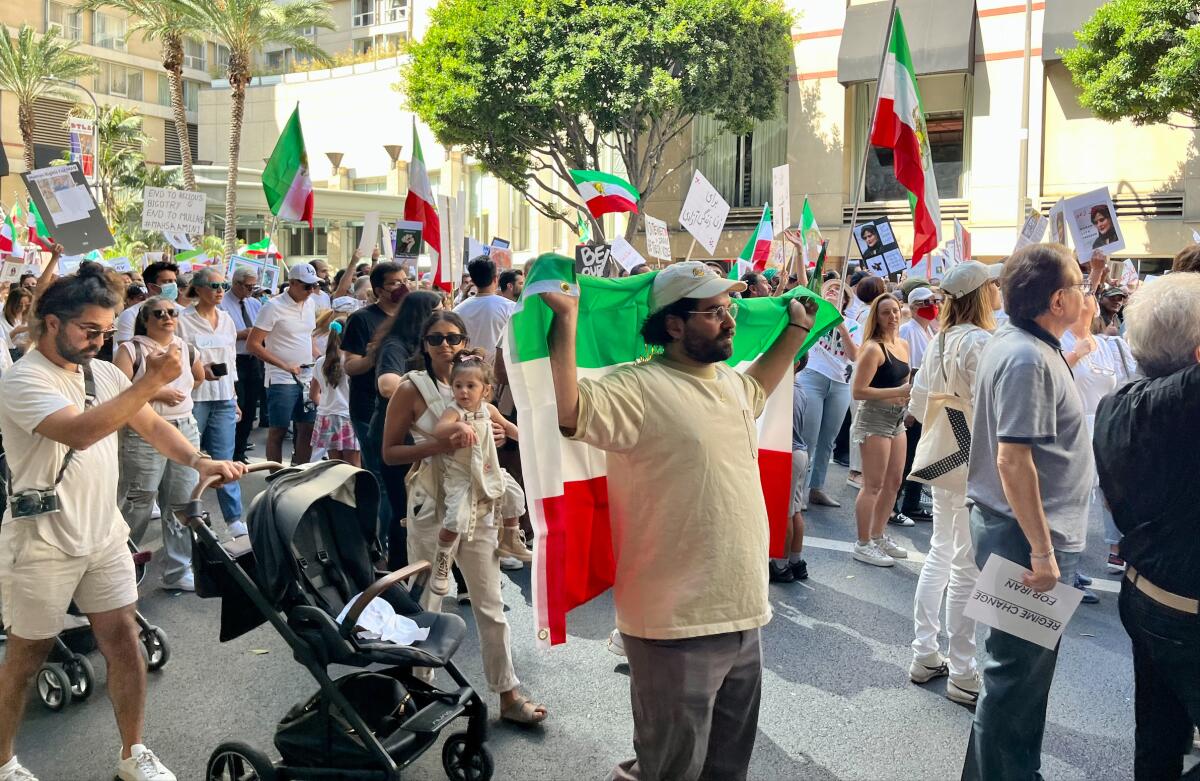
Thatâs especially true against hyper-connected young people who have never known anything other than what one hit song calls âthe mandatory heavenâ of life under the dictates of the Islamic Republic.
âThis wonât end anytime soon. Our generation is too educated to be cheated with old tactics, and we donât want our lives ruled by the ideologies of old people,â said Mahbod, a student at Sharif University, one of Tehranâs top higher-learning institutions, who, like Shahrzad and others interviewed, gave only his first name.
âAnd itâs a full social revolution. Students have the support of brothers, fathers, uncles, grandfathers â every layer of society is involved.â
âWoman, life, freedom.â L.A. protest for Iran draws thousands
More ominous for political leaders is that even if the state were inclined to compromise, analysts say, it may be too late.
âThe train has already left the station. No matter what this government gives, it probably wonât be enough to assuage protestersâ grievances at this point,â said Dina Esfandiary, senior advisor for the Middle East and North Africa region at the International Crisis Group think tank.
Iranâs leaders, she said, probably view the situation as akin to the predicament facing the late Mikhail Gorbachev, the leader whose reforms brought about greater freedom for Russians but also the eventual dissolution of the Soviet Union.
âIf they give in now, itâll be a Gorbachev moment â the beginning of the end of the Islamic Republic. Thatâs how they see it,â Esfandiary said.
Alarmed by the nationâs low birth rate, the Iranian government is encouraging childbearing and imposing restrictions on abortion and contraception.
That stark view augurs a showdown between a government willing to use escalating force and protesters who have increasingly turned to slogans such as âDeath to the dictator!â as a measure of how far they are willing to push matters. With acts of resistance ramping up across the country, especially among women, reestablishing control will get harder, said Azadeh Akbari, an Iran expert at the University of Twente in the Netherlands.
âIf every woman decides to take off the hijab, then how many police officers will be needed to control that?â she said. âThatâs the real revolution.â
A glance at Shahrzadâs life hints at the depth of the discontent with which Iranâs leaders must contend. She never agreed with the hijab law but views it more as a nuisance than anything else, especially during the countryâs broiling summer, when she has to wear her scarf to work for eight hours.
More enraging is life in a country racked by chronic mismanagement, a raft of international sanctions because of its nuclear program, and the COVID-19 epidemic, all of which have shrunk Shahrzadâs world.
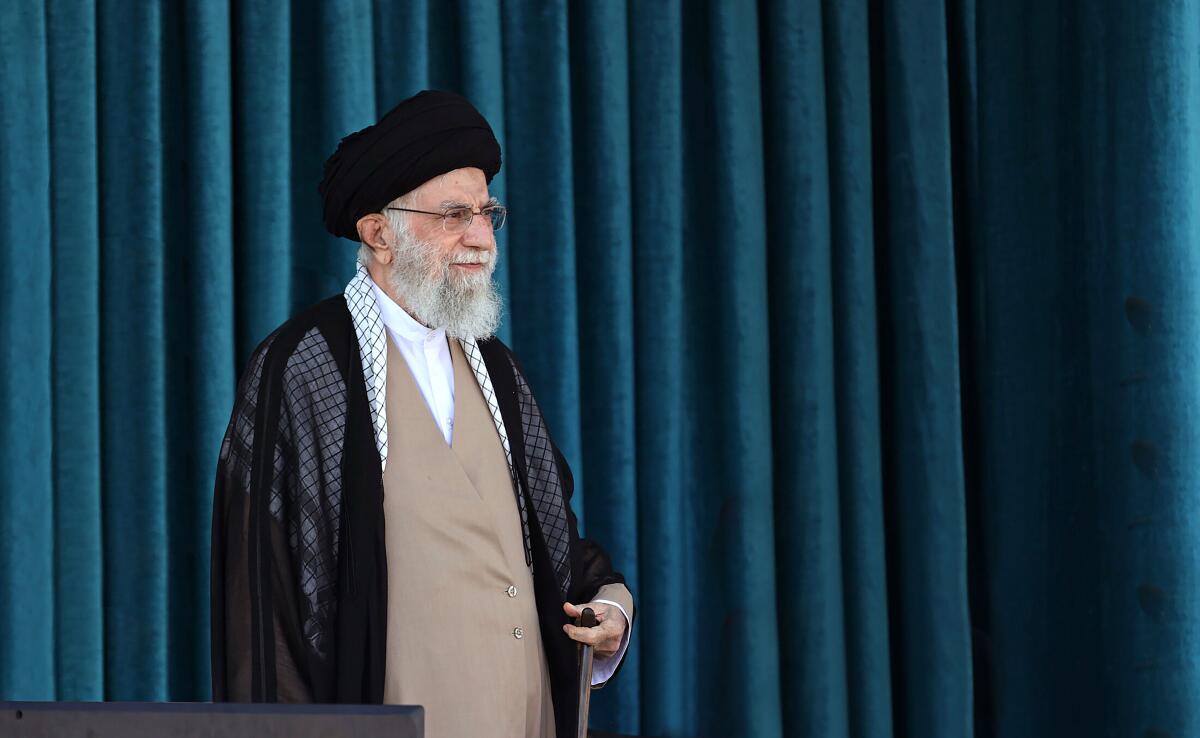
A university graduate with a degree in biochemistry, she has little to show for it other than a job as a teacher and administrator in various schools around south Tehran. She makes $350 a month, nowhere near enough to rent a small apartment, let alone buy one. Notions of marriage, kids and the basic touchstones of a stable middle-class existence seem far-fetched.
âTen years ago I could take trips inside and outside the country. I canât do that anymore,â she said. âI canât afford to buy a cheap car. I shouldâve had my own small apartment by now, with some simple furniture. Instead, I live with my parents. If my cellphone breaks, Iâll have to wait a few months before I can buy one.â
Even the governmentâs supporters acknowledge that the situation is difficult. In an address this week, parliament Speaker Mohammad Qalibaf chanted in support of the police and Supreme Leader Ayatollah Ali Khamenei at a rally, but he also acknowledged that people were entitled to complain about dismal economic conditions.
Start your day right
Sign up for Essential California for the L.A. Times biggest news, features and recommendations in your inbox six days a week.
You may occasionally receive promotional content from the Los Angeles Times.
Those concerns arenât new, Esfandiary said, but this time people are angrier.
âTheyâre more aggressive and violent, and thatâs spurred by the sense of hopelessness that people in Iran feel right now,â she said.
Yet Khamenei and other leaders have fallen back on their wonted explanation for social strife, exonerating themselves and blaming outside forces instead. On Monday, Khamenei broke his silence after 17 days of protests to dismiss them as âriots and insecuritiesâ planned by Tehranâs usual adversaries, the U.S. and Israel. The countryâs elite Islamic Revolutionary Guard Corps, police and pro-government militiamen have employed rubber bullets, live rounds, beatings and arrest campaigns to quell what they insist is foreign-driven chaos.
Protests continued in Iran and elsewhere after a 22-year-old Iranian woman who was accused of not wearing her hijab properly died in police custody.
Shahrzad can see the despair and desperation in her own family. Even her brother-in-law, a mild-mannered man who never hit anyone, she said, found himself fighting off a militiaman he saw trying to force a girl into a car as he was headed home on the fifth day of the protests.
âIf someone like him would do it, then for sure it will turn more violent,â she said.
Another reason for the persistence of the protests has been the deep well of opposition against the hijab law, which began dictating womenâs dress and behavior in Iran a few years after the 1979 Islamic Revolution brought Islamic clerics to power.
âWeâve had uprisings from the middle class for economic reasons, but this time half of society, schoolgirls to grandmas, are sick of it, saying enough is enough,â Akbari said.
Reviving the nuclear accord could delay Iranian acquisition of a bomb, but that doesnât make agreement easy â or a given.
The current turmoil might not spell the change in governance that many hope for, said Esfandyar Batmanghelidj, who founded Bourse & Bazaar, a news and research agency focusing on Iranian politics and economics. But it has spurred a shift in the political discourse in ways previous bouts of unrest didnât by forcing a reevaluation of Iranâs social contract.
âWomenâs rights are the most visible form of what people are protesting against. But what they are asking for now is a real change to the way in which the state and society relate to one another,â he said.
Shahrzad goes back and forth as to whether the protests will succeed. But sheâs certain of one thing: Even if the government does manage to stop the protests, theyâll inevitably flare up again.
âThereâs just too many people with nothing to lose now,â she said.
âIt just canât go on like this anymore. People are fed up.â
Special correspondent Khazani reported from Tehran and Times staff writer Bulos from Beirut.
More to Read
Sign up for Essential California
The most important California stories and recommendations in your inbox every morning.
You may occasionally receive promotional content from the Los Angeles Times.
